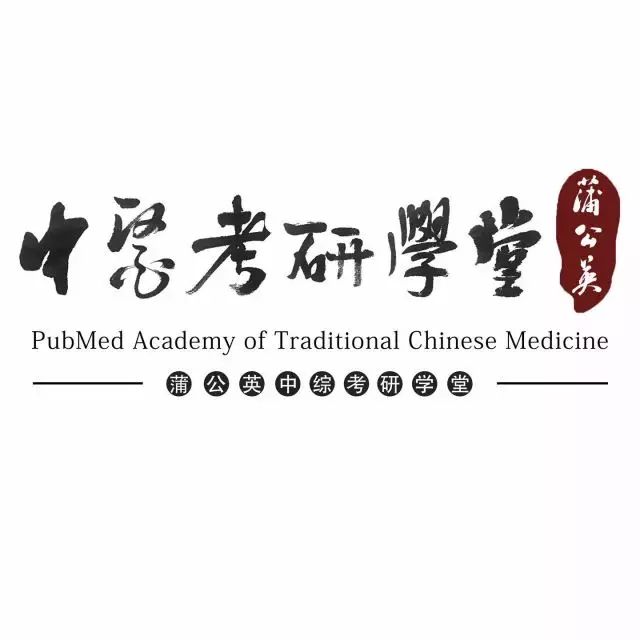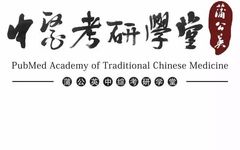1. Overview of TCM Diagnosis
Main Content:
Four Examinations: Observation (Wang), Auscultation (Wen), Inquiry (Wen), and Palpation (Qie);
Eight Principles: Yin-Yang, Exterior-Interior, Cold-Heat, Deficiency-Excess;
Pattern Differentiation: Eight Principles Differentiation, Etiology Differentiation, Qi-Blood-Body Fluids Differentiation, Zang-Fu Differentiation, Meridian Differentiation, Six Meridians Differentiation, Wei-Qi-Ying-Blood Differentiation, San Jiao Differentiation;
Diagnosis: Diagnosis of common diseases and pattern diagnosis; symptom differentiation; case writing.
2. The Four Examinations in TCM

Observation (Wang Zhen)
|
Tongue Quality |
Presentation |
Main Disease |
|
|
Tongue Shape |
Swollen |
Swollen tongue body, extends to fill the mouth |
Spleen and Kidney Yang Deficiency, Heart and Spleen Heat Excess, Poisoning |
|
Thin |
Thin and small tongue body |
Qi and Blood Deficiency, Yin Deficiency with Excess Heat |
|
|
Cracked |
Cracks on the tongue surface |
Yin Fluid Deficiency, Excess Heat injuring Fluids, Blood Deficiency |
|
|
Teeth Marks |
Teeth marks on the edges of the tongue |
Spleen Deficiency with Excess Dampness |
|
|
Thorny |
Enlarged and protruding tongue papillae, resembling thorns |
Excess Heat Evil, Heat in the Blood |
|
|
Tongue State |
Rigid |
Rigid tongue body unable to move |
Heat entering the Pericardium, Phlegm-Damp obstructing, High Fever injuring Fluids, Stroke signs |
|
Flaccid |
Weak tongue body unable to extend |
Extreme Qi and Blood Deficiency, Extreme Yin Deficiency |
|
|
Trembling |
Involuntary trembling of the tongue |
Qi and Blood Deficiency, Yang Deficiency, Extreme Heat generating Wind, Internal Wind Movement |
|
|
Protruding |
Protruding tongue not retracting or repeatedly licking lips |
Heart and Spleen Heat, Epidemic Poison attacking the Heart, Precursor to Wind Movement, or Developmental Delay in Children |
|
|
Deviated |
When extending the tongue, it deviates to one side |
Stroke or precursor to Stroke. |
|
|
Shortened |
Rolled tongue unable to extend, in severe cases, tongue does not reach teeth |
Reflection of critical signs, seen in Cold congealing the meridians, Phlegm-Damp obstructing, Heat disease injuring Fluids |
|
|
Coating Color |
White |
White coating |
Exterior syndrome, Cold syndrome |
|
White Powder Accumulation (Accumulated Powder Coating) |
Excess Heat in the Interior, commonly seen in epidemics and internal abscesses |
||
|
Yellow |
Yellow coating |
Heat syndrome, Interior syndrome |
|
|
Light yellow coating on a swollen tongue |
Yang Deficiency with Water Dampness not transforming |
||
|
Gray-Black |
Gray-black and moist |
Cold Damp syndrome |
|
|
Gray-black and dry |
Interior Heat syndrome |
||
|
Coating Quality |
Thickness |
Based on whether the base is visible |
Thin coating indicates lighter diseases, thick coating indicates deeper diseases |
|
Moist |
Moderately moist is considered moist |
Fluids are intact, fluids are not injured |
|
|
Dry |
Dry without fluids is considered dry |
Fluid loss or fluids cannot rise |
|
|
Greasy |
Greasy coating: fine coating that cannot be scraped off |
Damp turbidity, Phlegm-Damp, Food accumulation |
|
|
Loose coating: loose coating that can be easily scraped off |
Food accumulation or Phlegm turbidity |
||
|
Peeling |
Partial or complete peeling of the tongue coating |
Injury to both Qi and Yin of the Stomach |
|
|
True and False |
True coating: tightly adheres to the tongue surface, cannot be scraped off, indicating rooted coating |
Stomach Qi still exists |
|
|
False coating: appears to float on the tongue surface, can be scraped off easily, indicating unrooted coating. |
Stomach Qi is deficient |

Inquiry (Wen Zhen)
|
Cold-Heat Types |
Clinical Presentation |
Clinical Significance |
|
|
Chills and Fever |
Severe chills, mild fever, no sweating, body aches, pulse floating and tight |
Wind-Cold Exterior Syndrome (Exterior Cold Syndrome) |
|
|
Severe fever, mild chills, thirst, red face, pulse floating and rapid |
Wind-Heat Exterior Syndrome (Exterior Heat Syndrome) |
||
|
Alternating Cold and Heat |
Fever at irregular times, bitter mouth, dizziness, fullness in the chest and hypochondria, loss of appetite |
Cold Damage Shao Yang Syndrome (Half Exterior Half Interior) |
|
|
Fever at regular times, severe headache, profuse sweating, thirst |
Malaria |
||
|
Only Cold, No Heat |
New illness suddenly feels cold, severe cold pain in the abdomen or other local areas |
Excess Cold Syndrome |
|
|
Chronic illness with weakness, fear of cold, pale face, cold limbs |
Deficiency Cold Syndrome |
||
|
Only Heat, No Cold |
High Fever |
High fever (T≥39℃) persists, thirst for cold drinks, profuse sweating, pulse flooding and large |
Interior Excess Heat |
|
Tidal Fever |
Afternoon tidal fever: higher heat, severe heat in the afternoon + abdominal pain with tenderness, constipation |
Yangming Fu Excess Syndrome |
|
|
Yin Deficiency Tidal Fever: low fever in the afternoon or at night + five hearts heat, bone steaming tidal fever, night sweats, red cheeks |
Yin Deficiency Syndrome |
||
|
Wet-Heat Tidal Fever: body heat not rising, severe heat in the afternoon + heaviness in the head and body, chest and abdomen fullness, greasy coating |
Wet-Heat Disease |
||
|
Low Fever |
Low-grade fever, lower heat (37-38℃) |
Qi Deficiency, Yin Deficiency, Qi Stagnation, residual heat after Warm Disease |
|
|
Spontaneous Sweating |
Daytime sweating, especially during activity + fatigue, fear of cold |
Qi Deficiency, Yang Deficiency Syndrome, Wei-Yang not secure |
|
|
Night Sweats |
Night sweating, stops upon waking + tidal fever, red cheeks |
Yin Deficiency Syndrome |
|
|
Critical Sweating |
Critical illness, profuse sweating, cold limbs, pulse weak or almost absent, agitation and thirst, pulse thin and rapid |
Loss of Yang, Loss of Yin Syndrome |
|
|
Battle Sweating |
First whole body shivering, then sweating; sweating reduces heat, pulse calm and body cool—evil departs and Zheng recovers. Sweating with persistent heat, agitation, pulse rapid—evil overcomes Zheng weakness. |
Severe struggle between evil and Zheng, turning point in disease progression. |

Palpation: Pulse and Main Disease
|
Name |
Pulse Pattern |
Main Disease |
|
|
Floating Pulse |
Floating |
Light pressure yields pulse, heavy pressure slightly reduces |
Mainly exterior syndrome. Strong exterior indicates excess, weak exterior indicates deficiency |
|
Scattered |
Floating, large, without root, pulse irregular |
Yuan Qi scattered, organ essence about to exhaust |
|
|
Hollow |
Floating, large, hollow, like pressing on a scallion tube |
Mainly blood loss, Yin injury |
|
|
Leather |
Floating, string-like, hollow, like pressing on a drum skin |
Mainly blood loss, essence loss, miscarriage, excessive bleeding |
|
|
Deep Pulse |
Deep |
Light pressure does not respond, heavy pressure is needed to feel |
Mainly interior syndrome. Strong interior indicates excess, weak interior indicates deficiency |
|
Hidden |
Only felt with heavy pressure, may temporarily be hidden and not apparent |
Mainly evil closure, critical conditions, extreme pain |
|
|
Firm |
Deep, large, string-like, only felt with deep pressure |
Mainly symptoms of masses, lumps, hernias |
|
|
Rapid Pulse |
Rapid |
Pulse comes quickly, more than five beats per breath (90 beats/min) |
Heat syndrome (strong, weak) |
|
Hasty |
Pulse comes urgently, more than seven beats per breath (120 beats/min) |
Extreme heat disease, Yang extreme Yin exhausted |
|
|
Moving |
Pulse is short, slippery, rapid, strong, feels like a bean |
Shock, pain |
|
|
Choppy |
Rapid but stops intermittently, stops without a fixed number |
Excess Yang heat, Qi stagnation, Blood stasis, Phlegm and food stagnation |
|
|
Slow Pulse |
Slow |
Pulse comes slowly, less than four beats per breath (60 beats/min) |
Cold syndrome (strong, weak) |
|
Leisurely |
Four beats per breath, pulse comes and goes slowly and weakly |
Damp syndrome, Spleen deficiency |
|
|
Knotted |
Slow but stops intermittently, stops without a fixed number |
Yin cold Qi stagnation, Cold Phlegm Blood stasis |
|
|
Intermittent |
Slow with a stop, stops with a fixed number, comes after a long time |
Organ Qi weak, Wind syndrome, Pain syndrome, Shock |
|
|
Weak Pulse |
Weak |
All three pulse positions are weak |
Qi and Blood deficiency, especially common in Qi deficiency |
|
Soft |
Floating and soft, lightly pressed can be felt, heavily pressed is not obvious |
Deficiency syndrome, Damp syndrome |
|
|
Thin |
Pulse comes like a thread, weak and powerless, but should be felt clearly |
Qi and Blood deficiency, various deficiency syndromes, also indicates Damp syndrome |
|
|
Fine |
Extremely thin and soft, pressing it feels like it might disappear, barely felt |
Heart and Kidney Yang deficiency and sudden collapse, deficiency of Yin, Qi, and Blood |
|
|
Weak |
Deep and thin, responding finger is weak |
Qi and Blood deficiency syndromes |
|
|
Rough |
Comes and goes with difficulty, like lightly scraping bamboo |
Qi stagnation, Blood stasis, Injury to essence and blood |
|
|
Solid Pulse |
Solid |
All three pulse positions are firm and strong |
Excess syndrome |
|
Slippery |
Comes and goes smoothly, like beads rolling on a plate, feels round and smooth |
Phlegm-Damp, Food stagnation, Excess Heat, Pregnancy |
|
|
Flooding |
Pulse shape is extremely large, like a flood, comes strong and goes weak |
Excess Heat Evil |
|
|
String-like |
Straight and long, like pressing on a guitar string |
Liver and Gallbladder diseases, Pain syndromes, Phlegm-Damp |
|
|
Tight |
Like twisting a rope |
Cold syndrome, Pain syndromes, Food stagnation |
|
|
Large |
Pulse shape is larger than normal pulse, but without a surging force |
Strong indicates excess, weak indicates deficiency |
3. TCM Pattern Differentiation
Eight Principles Differentiation
(1) Clinical manifestations of exterior and interior syndromes, their interrelations, and key points for differentiation.
Exterior-interior differentiation is a method to identify the location of the disease and the tendency of the disease. Generally speaking, diseases affecting the skin and muscles, with superficial locations, belong to exterior syndromes, while diseases affecting the organs, blood vessels, and bone marrow, with deeper locations, belong to interior syndromes.
(2) Clinical manifestations of cold and heat syndromes, their interrelations, and key points for differentiation.
(3) Clinical manifestations of deficiency and excess syndromes, their interrelations, and key points for differentiation.
(4) Formation, clinical manifestations, and key points for differentiation of Yin and Yang syndromes.
Zang-Fu Differentiation
|
Zang-Fu |
Main Clinical Manifestations and Differentiation Points |
|
Heart |
Heart Qi Deficiency and Heart Yang Deficiency, Heart Blood Deficiency and Heart Yin Deficiency, Heart Blood Stasis and Heart Fire Excess |
|
Lung |
Lung Qi Deficiency and Lung Yin Deficiency, Wind-Cold invading the Lung and Wind-Heat invading the Lung, Dry Heat invading the Lung and Phlegm-Damp obstructing the Lung |
|
Spleen |
Spleen Qi Deficiency and Spleen Yang Deficiency, Cold-Damp obstructing the Spleen and Spleen-Stomach Damp-Heat |
|
Liver |
Liver Qi Stagnation, Liver Fire Rising, Liver Yang Rising, Internal Wind of the Liver, Liver Yin Deficiency, Liver Blood Deficiency, Liver-Gallbladder Damp-Heat, Cold Stagnation in the Liver Meridian. |
|
Kidney |
Kidney Yang Deficiency, Kidney Yin Deficiency, Kidney Essence Deficiency, Kidney Qi not securing, Kidney not receiving Qi |
|
Six Fu Organs |
Stomach Cold, Stomach Heat (Fire), Food Stagnation in the Stomach, Stomach Yin Deficiency, Large Intestine Damp-Heat, Large Intestine Fluid Deficiency, Bladder Damp-Heat Syndrome |
|
Combined Zang-Fu Diseases |
Heart and Lung Qi Deficiency, Heart and Spleen Qi Deficiency, Heart and Kidney Disharmony, Lung and Spleen Qi Deficiency, Liver Fire invading the Lung, Lung and Kidney Yin Deficiency, Liver and Spleen Disharmony, Liver and Stomach Disharmony, Spleen and Kidney Yang Deficiency with Liver and Kidney Yin Deficiency. |
Qi, Blood, and Body Fluids Differentiation
|
Type |
Meaning |
Characteristic Manifestations |
|
Qi Deficiency |
Insufficient Yuan Qi, dysfunction, decline of organ functions, decreased resistance to disease |
Shortness of breath, fatigue, weak pulse (reduced propulsion, weakened transformation), spontaneous sweating (failure to secure), easy to catch colds (reduced defense) |
|
Qi Stagnation |
Qi running not smooth and stagnant |
Distension, fullness, pain |
|
Qi Reversal |
Qi rising too much and descending insufficiently |
Shortness of breath, cough, nausea, headache |
|
Qi Sinking |
Qi deficiency unable to lift |
Prolapse of internal organs, chronic diarrhea, rectal prolapse |
|
Qi Stagnation |
Qi stagnation trapped inside and unable to express |
Convulsions in the limbs, clenched teeth |
|
Qi Collapse |
Extreme Qi deficiency leading to risk of loss and extinction |
Persistent sweating, incontinence |
Further Reading
12
One Word

Since you expect a brilliant and great life, you should start today, with unwavering determination and steadfast belief, to create happiness for yourself and humanity with your wisdom and perseverance.
TCM Diagnosis
Knowledge Point Review

Song of Differentiation of Exterior-Interior, Cold-Heat, Deficiency-Excess
1. Exterior Cold Syndrome:
Injury from cold, chills with fever, nasal congestion, no sweating, floating tight cough.
Middle division with evil wind, pulse floating and slow, headache and neck pain, spontaneous sweating.
2. Exterior Heat Syndrome:
Exterior heat, heavy fever, light chills, slight thirst, swollen red throat.
Thick phlegm, floating rapid pulse, red tongue with yellow coating.
3. Interior Heat Excess Syndrome:
Interior heat excess, high fever, agitation, thirst for cold drinks.
Abdominal pain with tenderness, dark urine, pulse deep and rapid, yellow coating.
4. Interior Cold Deficiency Syndrome:
Interior cold deficiency, abdominal fullness, vomiting clear water, shortness of breath.
Little appetite, loose stools, pale tongue with white coating, pulse deep and slow.
5. Cold Syndrome:
Cold syndrome, pale face, fear of cold, curled up, pale tongue, long clear urine.
Loose stools, pale tongue, pulse slow and weak, Yin excess with external cold and Yang deficiency.
6. Excess Heat Syndrome:
Excess heat, high fever, red face, sweating, thirst for cold drinks.
Sing loudly or delirious, red tongue, flooding pulse, and confusion.
7. Deficiency Heat Syndrome:
Deficiency heat, bone steaming, five hearts heat, night sweats, fatigue, palpitations, insomnia.
Dizziness, blurred vision, lower back pain, shortness of breath, dry throat, little phlegm.
Red cheeks, no coating, thin rapid pulse, nourishing Yin and subduing Yang can cure.
8. Mixed Cold-Heat (Upper Heat, Lower Cold):
Mixed syndrome of upper heat and lower cold, heat in the chest, cough with sticky phlegm.
Oral ulcers, swollen throat, abdominal pain, loose stools, tight connection.
9. Upper Cold, Lower Heat:
Upper cold, stomach pain, vomiting clear water, urgent hiccups.
Lower heat, abdominal distension, painful urination, yellow urine, frequent urination.
10. Interior Cold, Exterior Heat:
Interior cold with swelling, fear of cold, loose stools, cold limbs.
Re-infection with exterior heat, thirst, sore throat, fever, and exterior treatment should assist Yang.
11. Interior Heat, Exterior Cold:
Interior heat with exterior cold, agitation, constipation, dry throat.
Re-infection with cold evil, body pain, followed by fever and aversion to wind and cold.
12. True Heat, False Cold:
True heat, false cold, Yang not extending, pale complexion, cold hands and feet.
Heat, thirst, preference for cold drinks, red tongue, yellow coating, unclear spirit.
13. True Cold, False Heat:
Body cold, false heat, Yang Qi deficiency, pale tongue, clear urine, loose stools.
True heat, thirst, weak pulse, sweet warmth to remove heat is a good opportunity.
Postscript:
1: If you have good prescriptions, please share them on the platform.
2: If you have disease symptoms, you can leave a message in the dialogue window.
3: If you cannot buy rare medicinal materials, you can also entrust the platform to purchase on your behalf.
4: If you have sources of medicinal materials or local specialties, after assessment, you can also leave a message, the platform will purchase, with priority given to impoverished farmers.
WeChat 1: qq2864040977
WeChat 2: qq407437524 (full)
WeChat 3: zh1295730756

